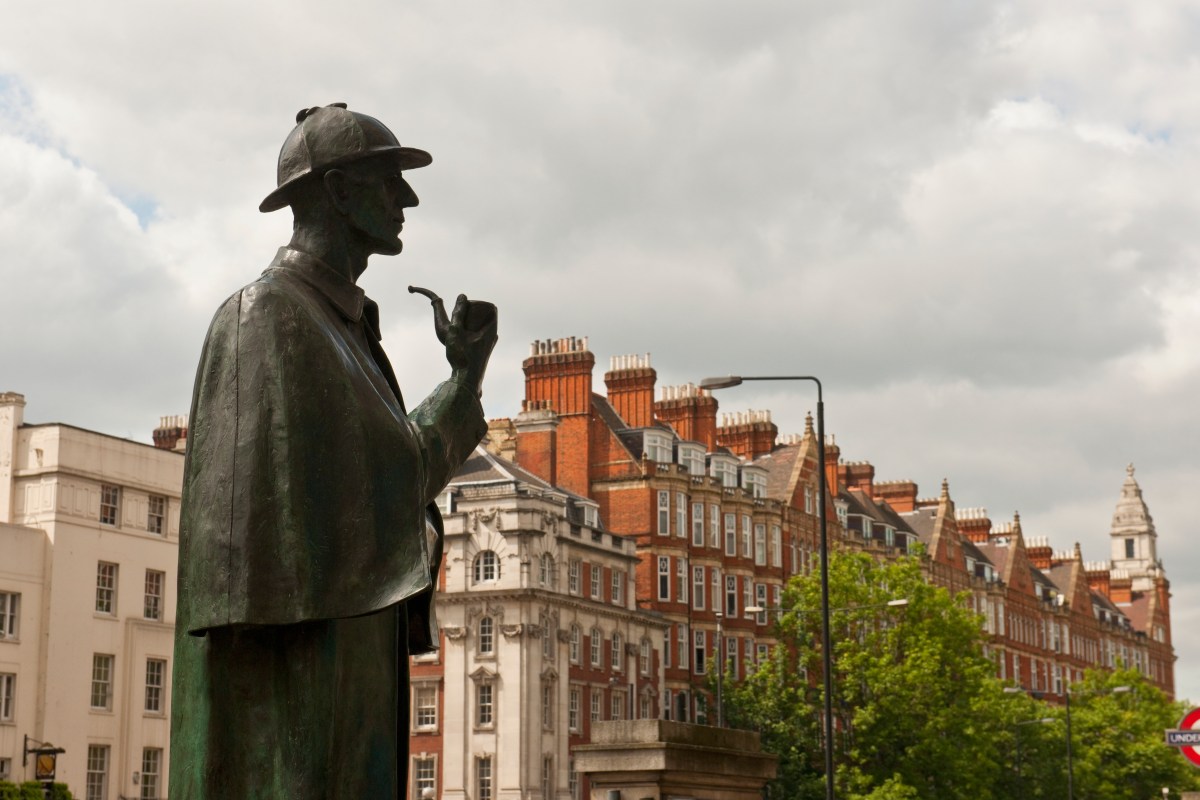In the BBC iteration of Sherlock, Benedict Cumberbatch’s Sherlock Holmes tends to demand time to think. While those around him lunge for quick conclusions, he regularly requires a stretch of time to pause — perhaps even sit down — and explore his thoughts.
That’s because this version of Holmes makes regular use of his “mind palace,” a vast and imaginary mental mansion, where every room and every object in it is a placeholder for specific memories or pieces of information. When Holmes needs to recall a precise detail or make connections between details that once seemed disparate, he simply walks through this estate, observing objects along the way.
Now, the speed with which Cumberbatch’s Holmes (who’s a bit different than Arthur Conan Doyle’s Holmes, by the way — the original character didn’t have an explicit “mind palace”) perfectly accesses and acts on this technique is dramatized for television. Such mnemonic visualizing likely won’t be as effective or quick when applied to your life.
But then again, your life doesn’t involve solving murder cases in 19th-century London. Cultivating a mind, or memory palace, could have a positive, tangible impact on your relationships with friends and family, productivity in the workplace, or various creative side hustles. We explain how the strategy started, and how to try it for yourself.
“YouTube Drives” Are One of Our Favorite Meditation Hacks
Next time you need to calm your heart rate, head to NorwayFrom Antiquity to Netflix
As usual, the Ancient Greeks and Romans hit it first. A Greek lyric poet, Simonides of Ceos, is credited with the foundational memory palace concept. A sort of 5th/6th-century Voltaire, Simonides once escaped a collapsing banquet hall in his younger years.
After the fact, he was able to identify the crushed bodies by recalling the exact seating arrangements of everyone who’d been in the building. This led to the then-startling realization that people could remember things more easily by associating them with a spatial location. The Greeks dubbed the resultant association technique “the method of loci.”
Over the years, so-called memory journeys — in which thinkers put themselves back in spatial locations, or deliberately populate them with facts or memories they want to remember — have proliferated amongst Medieval dignitaries, Renaissance philosophers and modern memory champions.
Dominic O’Brien, an eight-time World Memory Champion (yes, that is a thing) attributes his success largely to his use of memory palaces. Competitors memorize hundreds of random numbers — think Pi — the order of several decks of cards, or lists of names, all by associating these pieces of information with a memory journey through a familiar place.
How It Works
Building your Memory Palace begins with choosing a familiar place, such as your home or office. The more well-known it is to you, the better. This location will serve as the “palace” where you’ll store the memories you want to remember. FYI: it doesn’t have to be inside. When I first started toying with mental palaces, I found that I preferred “jogging” a familiar three-mile route — one I’ve done so many times that I can easily picture every block, turn and cross.
For starters, visualize a specific path through this location. In your home, the path might start at the front door, move through the living room, kitchen, upstairs to the bedrooms, etc. The sequence should flow logically and be easy to visualize. Next, identify specific landmarks or “loci” along that path. These could be things like a piece of furniture, a door or a window. The key is to space them out along the path and ensure they’re distinct enough to be easily remembered.
Now, fill your palace. Associate each item or piece of information you want to remember with a loci in your palace. The more vivid, unusual or emotive the association, the more likely you are to remember it. For example, if you’re trying to remember a number, you might imagine it painted in bright red on a bathroom mirror. To recall the information later, mentally walk through your palace, visiting each loci in order. The images you’ve associated with each spot should spring to mind, helping you remember the information they represent.
Up Your Neuroplasticity
Look, this technique isn’t easy. It’s hard enough to just focus on walking through your imagined home or running along a familiar route. But it will get easier and you’ll be more inclined to use it once you see that it works. Mental exercise is like any other form of exercise — consistency is key. The more often you use this technique, the stronger and more efficient the associated neural networks become.
Neuroplasticity, remember, is the brain’s ability to change and adapt as a result of experience. With targeted practice, the human brain is capable of forming new connections and pathways among its neurons, or strengthening existing ones, which is the basis of our ability to learn and remember. Memory palaces can supercharge your neuroplasticity. The practice can boost visual-spatial memory, enhance associative memory and help you maintain general cognitive health.
That means a good Memory Palace won’t just help you remember something today — it’s even capable of stiff-arming aging and neurodegenerative diseases…helping you recall the things that are important to you for decades to come.
The Charge will help you move better, think clearer and stay in the game longer. Subscribe to our wellness newsletter today.




















